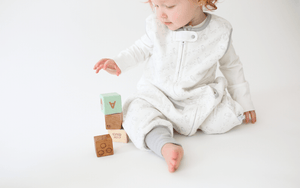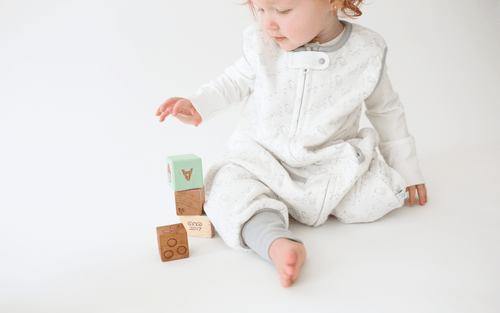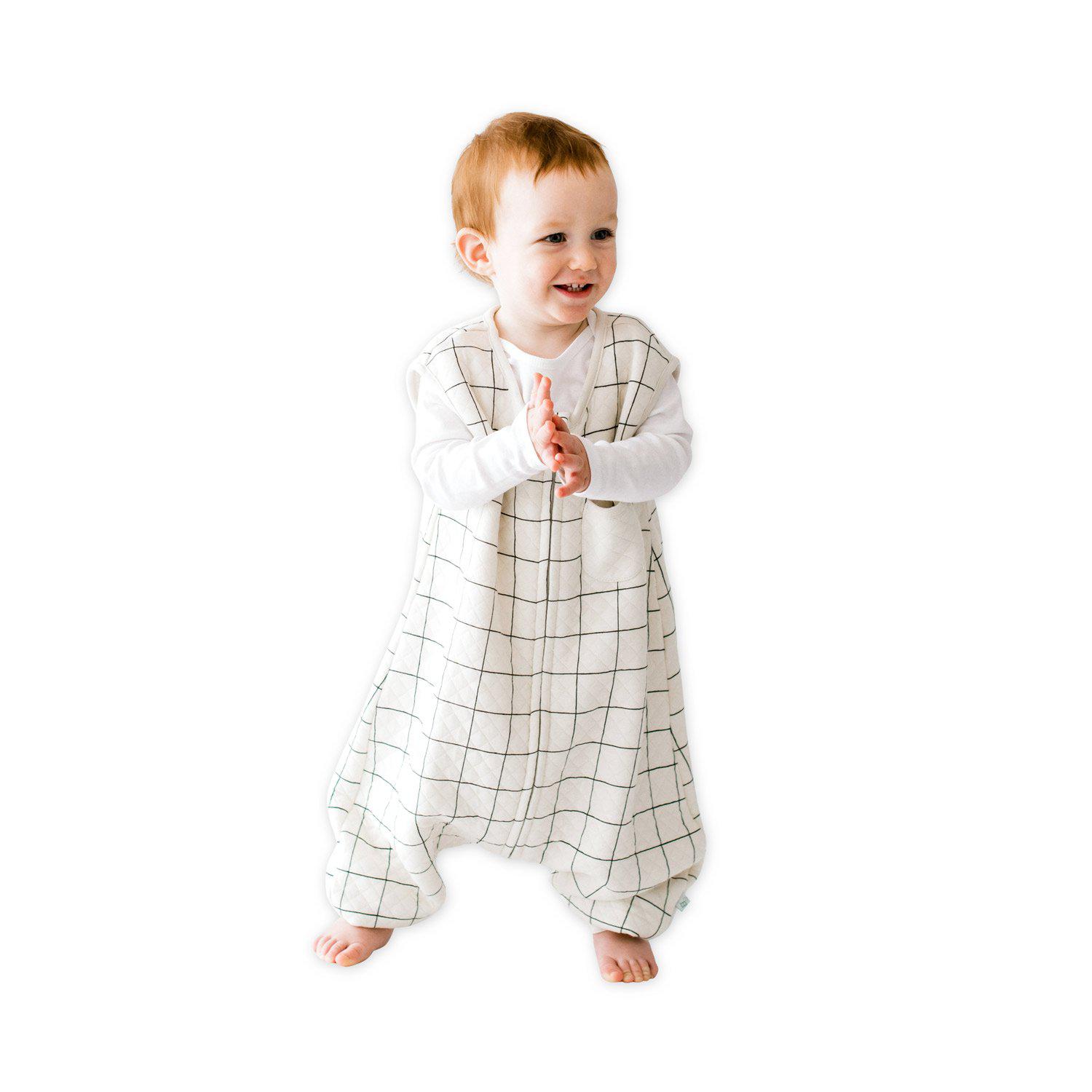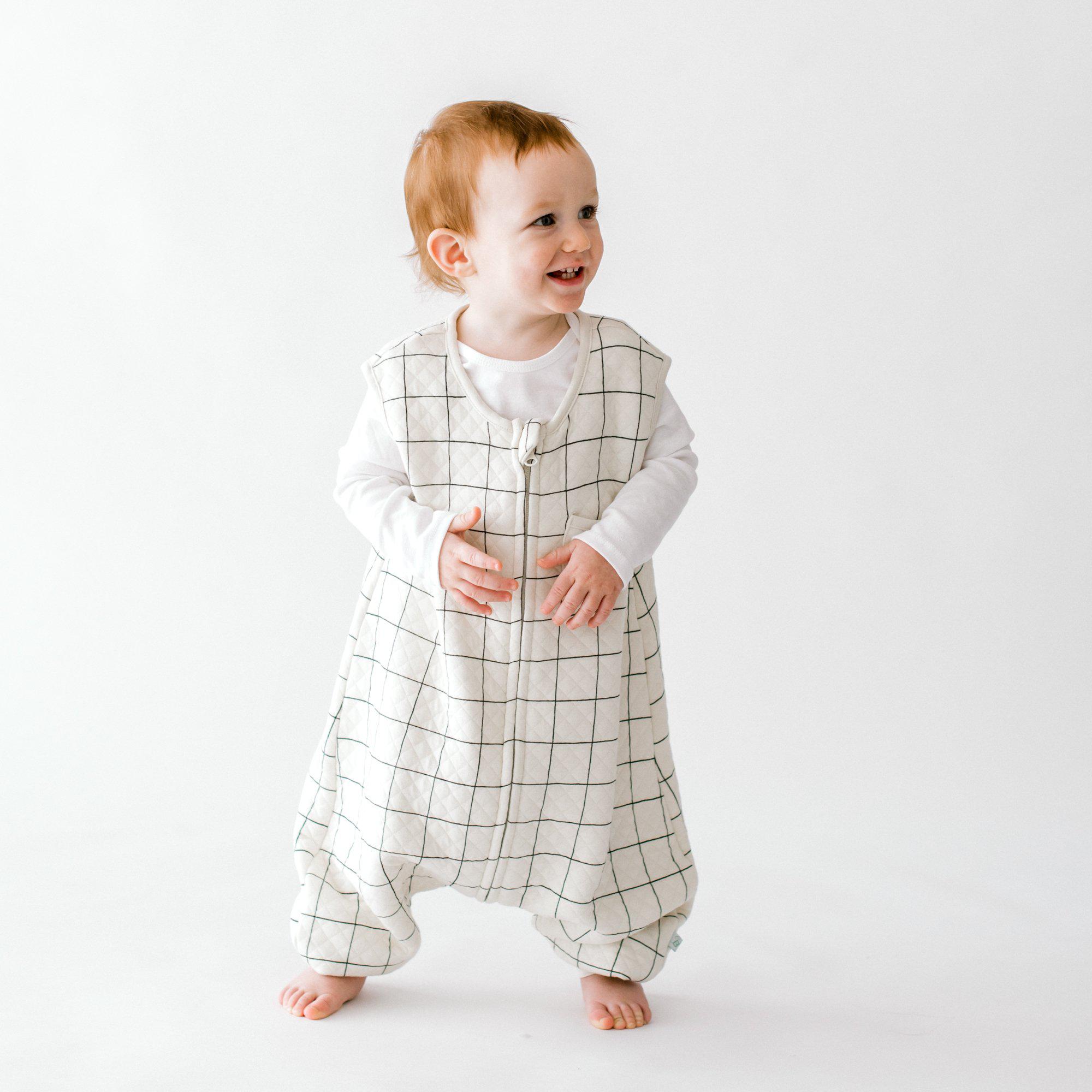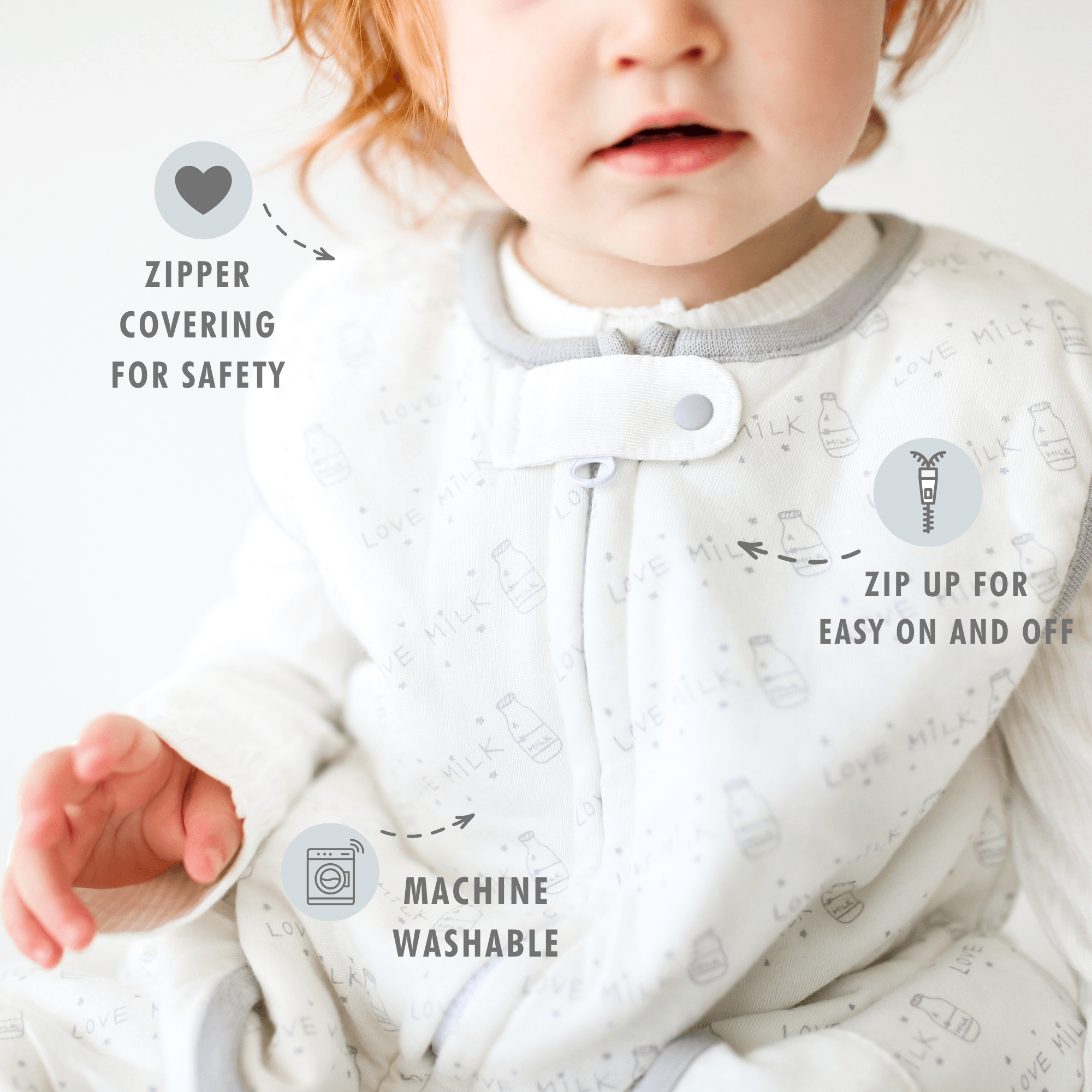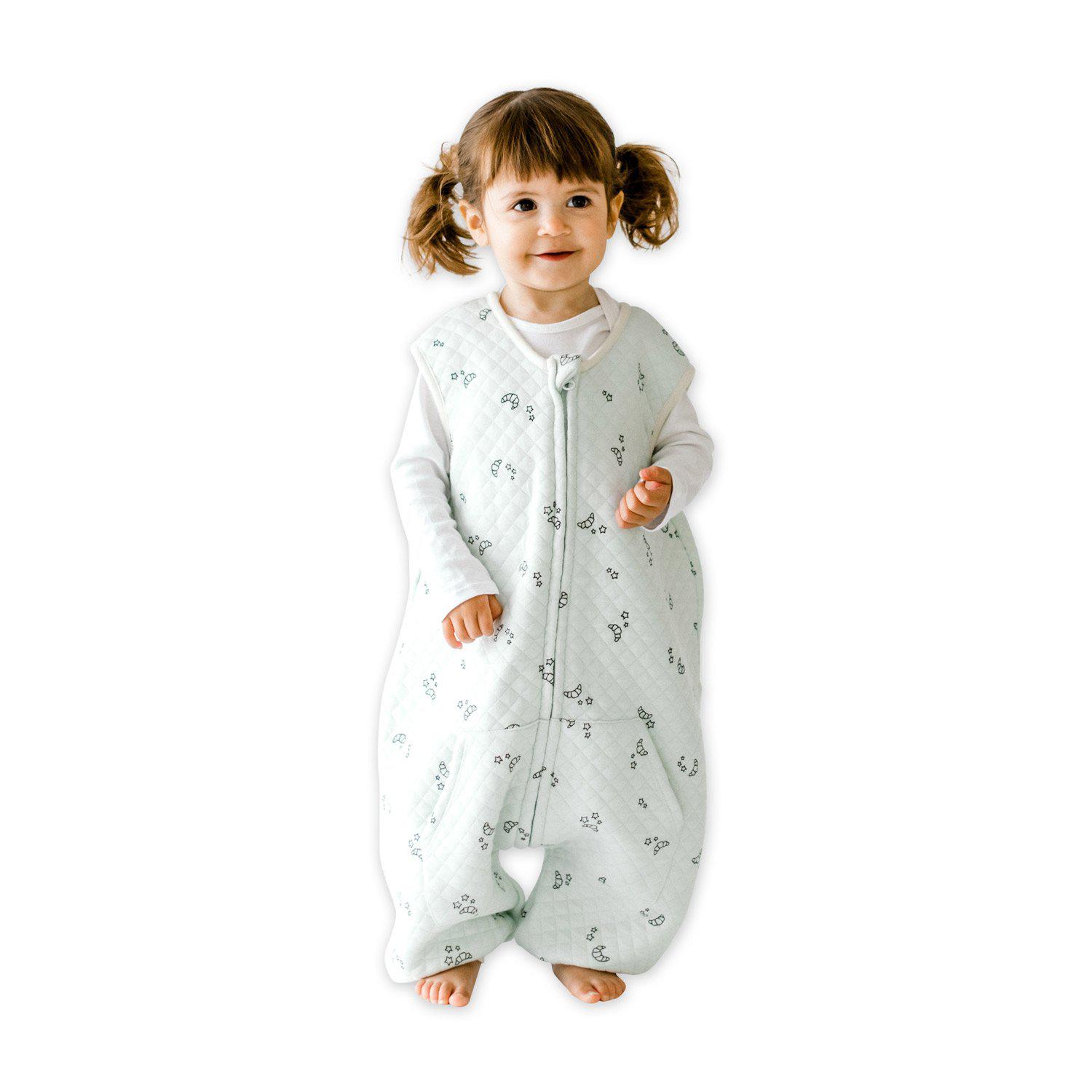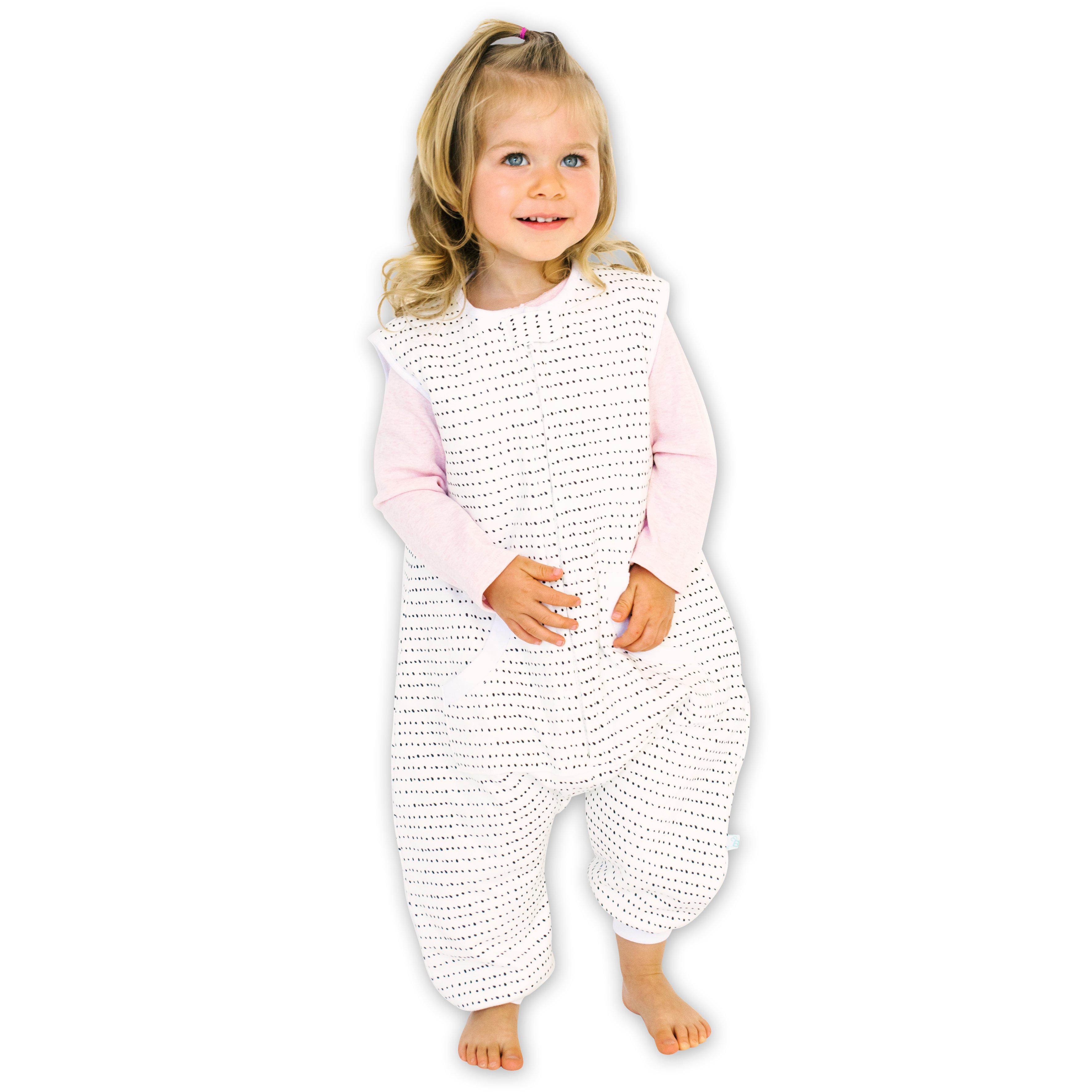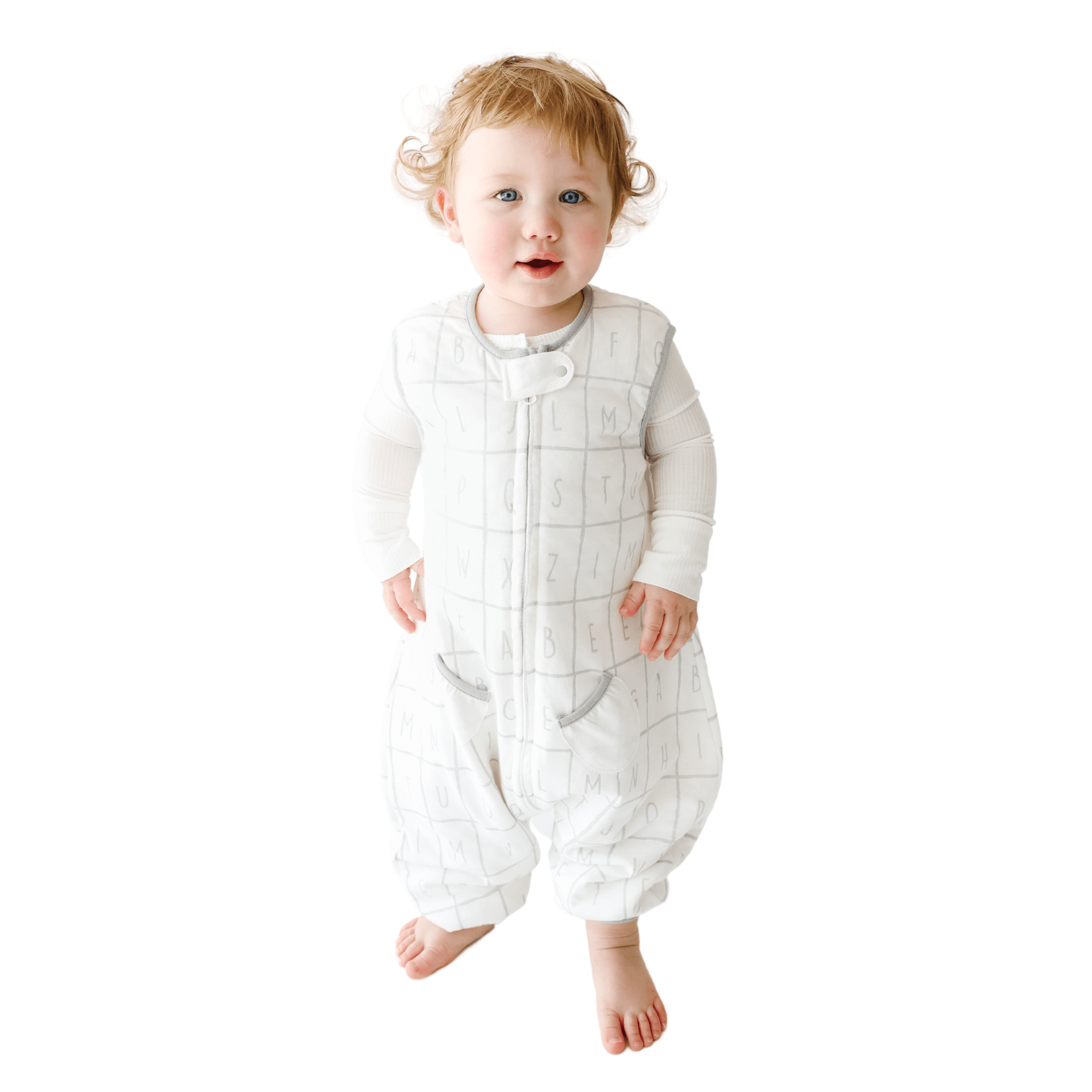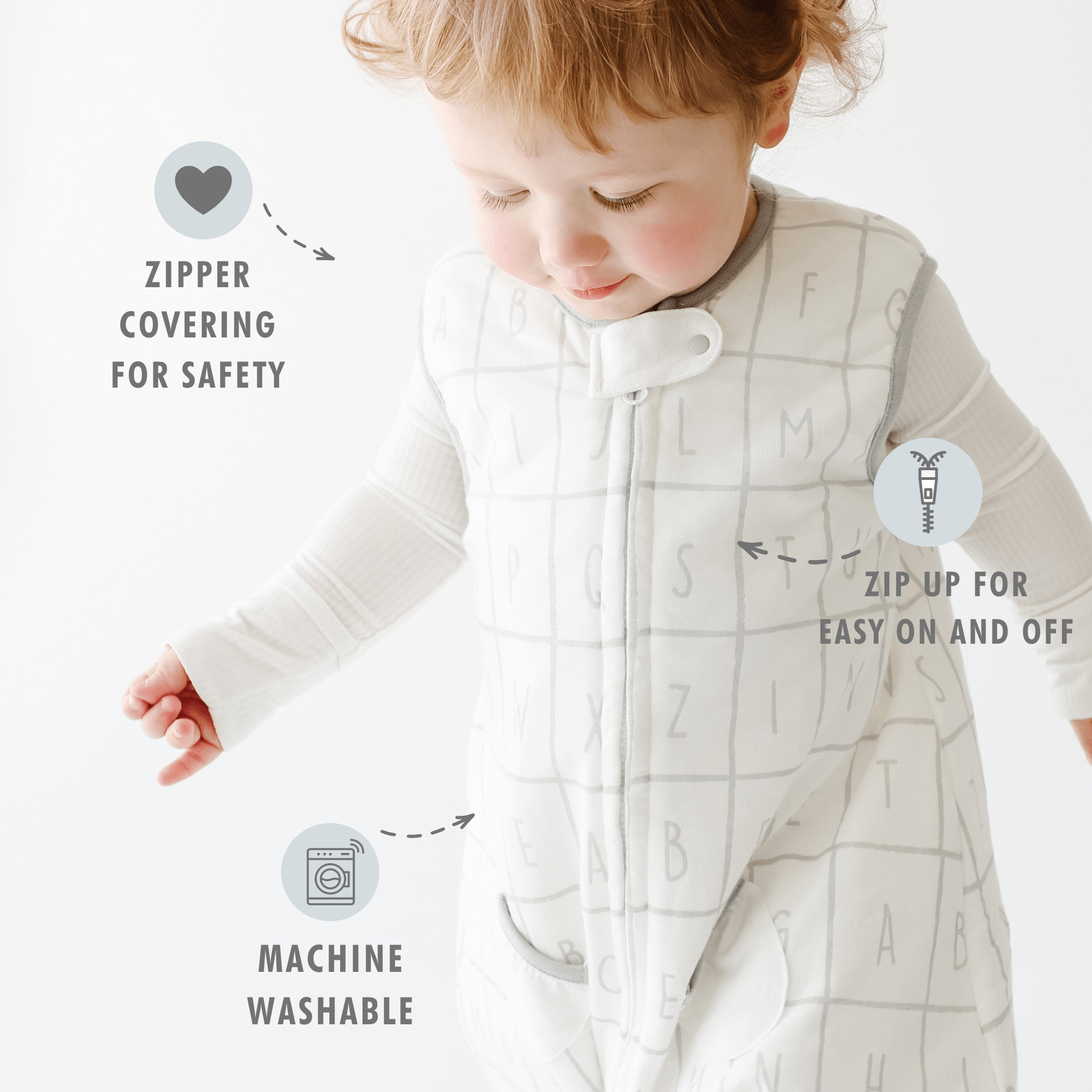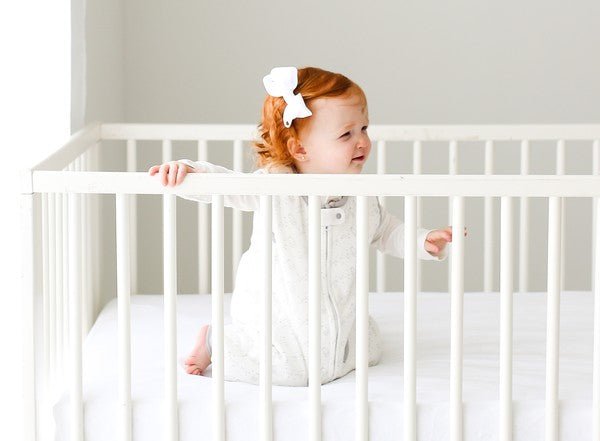Baby Sleep Schedule 9-14 Months
By: Michelle Cormier from Sleepe-Zzz Consulting

Parenting is a difficult role to play, and with the ever-changing aspects of it, it's easy to become overwhelmed. Knowing the fundamentals of sleep will propel your family towards success.
We have partnered with one of our favorite sleep experts, Sleepe-Zzz, to bring you the information on baby's sleep schedule for age group 9-14 months. The following sample schedules, tips, and information can make a difference in your family’s happiness as a whole.
Areas of focus:
- Falling asleep on their own for all sleep
- Naps & nights in crib
- Set schedule vs wake time
- Age appropriate schedule
What is independent sleep? And why is it so important?
A baby who falls asleep by a sleep prop (feeding, rocking, etc) will expect that same sleep prop when waking in the night, or for naps. Since babies have many sleep-wake cycles after 4 months, a sleep prop dependency results in frequent night wakings, which causes restless and poor sleep for the whole family.
A baby who knows how to fall asleep on their own, will do so without the assistance of anything/anyone. The effect of this will result in a child being able to transition sleep cycle flawlessly, independently, and will eliminate unnecessary night-time wakings and extending nap lengths.
Every single person wakes through the night, even you. This may not be realized because most of us have the ability to fall into our next sleep cycle before our bodies are able to fully register that we are awake. So how do you get your baby to sleep without being held? And When do babies learn to fall asleep on their own at night? When you put a sleeping baby to bed, you are interfering with the development of your little one’s natural sleep triggers. Babies and Children need the opportunity to experiment and figure out what best soothes them. Learning not to jump in too quickly and save your little one from frustration is an essential part in developing. Not only does this apply to multiple taught lessons in childhood it also applies to sleep.
Creating the perfect sleep environment for your little one:
The environment in which your little one sleeps plays a huge role in the effectiveness of their sleep. To create the perfect sleep environment use the checklist provided below:
- Pitch black room. Your little ones room should be pitch black and have no nightlights. This means all monitor lights, and any sun peaking in should be covered.
- True white noise should be used, with a non-looping noise machine. No lullabies, rain, ocean sounds, etc. A non-consistent noise can cause more sleep disturbances. White noise should be kept at a volume of 50-65 decibels and should be placed at the opposite side of the room as your little one’s crib.
- The room should be kept at a comfortable temperature of approximately 20-22 degrees Celsius.
- Crib should be free of all distractions
- Always practice safe sleep (Alone, on back, crib)
Nap & Bedtime Routines:
Introducing routines for your little one with nap time, and bedtime creates predictability for your baby. Creating a nap time routine doesn’t need to be stressful, a simple consistent 5-minute routine is sufficient for your baby.
Example: Diaper Change, Sleep Sack, White Noise, Lights off!
Bedtime routines need to be longer than a nap time routine, but consistency is just as important. Lasting approximately 15-20 minutes, with feeds done outside of the sleep space and never at the end of the routine. Baths do not need to be present, but this is entirely up to you!
Example: Bath, Pyjamas, Book, Sleep Sack, White Noise, Lights off!
Example: Sponge bath, Pyjamas, Sleep Sack, White Noise, Lights off!
Relevant Read:
Set schedule Vs Wake times
Set schedule: A schedule that doesn’t vary more than 15-20 minutes each day
A set schedule at the age of 6+ months is important and should be implemented. The reason a set schedule is recommended at this age because it helps set your little one’s internal clock and adds more structure to their sleep patterns. By implementing a more structured schedule, your baby knows when sleep is expected which will help lengthen your child’s naps, and set them up for a successful night of sleep. Below are a charts for a little before the 1-year old sleep schedules up to 14 month old sleep schedule and a baby awake time chart:

Wake time schedule: A schedule that is based on age appropriate wake times, which causes nap & bedtimes to vary (common for ages 0-6 months)
Creating the perfect schedule can be tough. When trying to create an age appropriate schedule for your baby/toddler, keep in mind that each age has a maximum amount of time they should be awake before having a nap, or going to bed for the night.
When transitioning from 3 to 2 naps, it is important to get the timing correct for your baby/toddler’s age. Nap 1 should begin between 9:00-10:00am, and nap 2 should begin between 1:30-2:30pm. Never be scared of an early bedtime during nap transitions, or bad nap days. No nap should ever begin before 9:00AM for this age group.
As your baby grows, and daily sleep needs drop, it is important to “cap the nap” for first nap, in order to save sleep pressure for the second nap, and the same for second nap with bedtime. As a child becomes closer to the 1 nap transition, one nap may become shorter, and need to be spaced further apart.
Transition from 2 to 1 nap
14-15 months is the most common age for your toddler to make the change to 1 nap. This nap transition is the toughest transition to make, consistency and patience are key to making this a success. If your little one is not showing signs of being ready, do not push. This push can backfire, and cause an overtired toddler, which results in restless, broken sleep for everyone.
Signs your little one is ready:
- Taking a long time to fall asleep, and then taking a short nap
- Sleeping too long in the morning and shortening second nap
- Starting to completely refuse one nap
These signs should be happening 3-5 times a week, and for at least 2 weeks straight. By waiting 2 weeks this will ensure your toddler isn’t just experiencing a sleep regression or just a bump in the road.
Shifting from 2 to 1 nap
Start by shifting your morning nap by 30-45 minutes every 3-4 days. Afternoon nap should be shifted 15-30 minutes to accommodate a later morning nap, which will ultimately cause a later bedtime, this is OKAY and only temporary.
Once your reach 11:00-11:30am, you will not offer an afternoon nap and will instead bring bedtime earlier to make up for the lack of second nap. Continue to shift until your reach your desired time (11:45am-1:00pm depending on morning wake up)

Sleep Regressions
The word regression doesn’t define what a sleep regression truly is. From here on out, I want to try and find a new word to explain a sleep regression, rather than the word regression. In fact these disturbances in sleep aren’t much of regression at all, but technically a progression in your little one’s development.
This can be a difficult stage for most parents, and babies. Your once little baby is coming closer to toddlerhood and starting to develop their own personality and behaviours. There are two common periods of time in which your little one will experience sleep disturbances;
- 8,9,10 sleep regression
- 12 month sleep regression
The 8,9,10 regression
You’ve just barely made it out of the 4 month regressions, and now there is another one. The first two regressions both coincide with standard nap transitioning. Around the 4 month regression, babies go from 4 naps to 3; around 8-10 months, babies go from 3 naps to 2.
Things typically settle down in sleep terms from 5 months until 8/9 months and then suddenly out of nowhere, your once sweet sleeper is now taking short naps, and waking frequently during the night. The 8,9,10 sleep regression is one of the largest sleep regressions your little one will experience aside from the 4 month regression.
What makes this regression so difficult?
The 8-10 month regression happens due to the development of your baby’s brain and physical milestones such as; crawling, standing, walking. There is a lot happening inside your little one’s head and body at this age. He/She may begin sitting up independently, crawling, scooting, pulling up, and even walking. This is a lot for a little baby to handle all at once, and sometimes the practice that goes along with these new found skills, can happen at the wrong times. When a new skill is developing, your little ones brain and body goes into overdrive and wants to practice, practice, practice even when they should be sleeping.
The 12 Month Regression
I know what you are thinking, how can there possibly be another sleep regression, right after the 8-10 month regression. Good news: The 12 month regression doesn’t hit as hard for most toddlers compared to the 8-10 regression, and is typically short lived. This regression is showcased by fighting naps, resisting bedtime and waking throughout the night. This regression almost ALWAYS causes your toddler to resist a nap, and is 90% of the time the second nap. This can cause parents to transition onto 1 nap too soon, resulting in even more sleep struggles.
The 12 month regression happens due to walking, language development, separation anxiety, and a fear of missing out. Your toddler is becoming their own little person, which means they are interested in learning, and they do that by watching those around them. Pair their new found fear of missing out with separation anxiety, and frustrations are at an all time high. The best way to handle this part of the regression is to spend some quiet one-on-one time together prior to sleep, and try to make sleep times enjoyable rather than a stressful event for all.
Surviving the regressions
- Maintain consistency within your child’s schedules and routines.
- Do not fall back on old habits as this causes the regression to last longer.
- Introduce a security item (if over 12 months)
- Shift bedtime earlier to avoid your toddler becoming overtired if short naps are happening.
- Set boundaries and check your reactions to the behaviours surrounding sleep.
- If all else fails - implement sleep training techniques!
Staying consistent with your little one’s routines, and schedules will benefit everyone in your family. Restful sleep is an essential part of growing, and maintaining a healthy lifestyle. Lack of sleep can seep into all areas of your life, and is not a pleasant experience for anyone. Healthy sleep habits will follow your child through-out their whole life, let’s teach our children that their sleep is important.
If your baby is 9-14 months and sleep is still tough, it may be time to contact a Certified Sleep Consultant, and consider a form of sleep training. For more insight and help, visit www.sleepe-zzzconsulting.com.
It’s time for parents and children to get the sleep they need.
